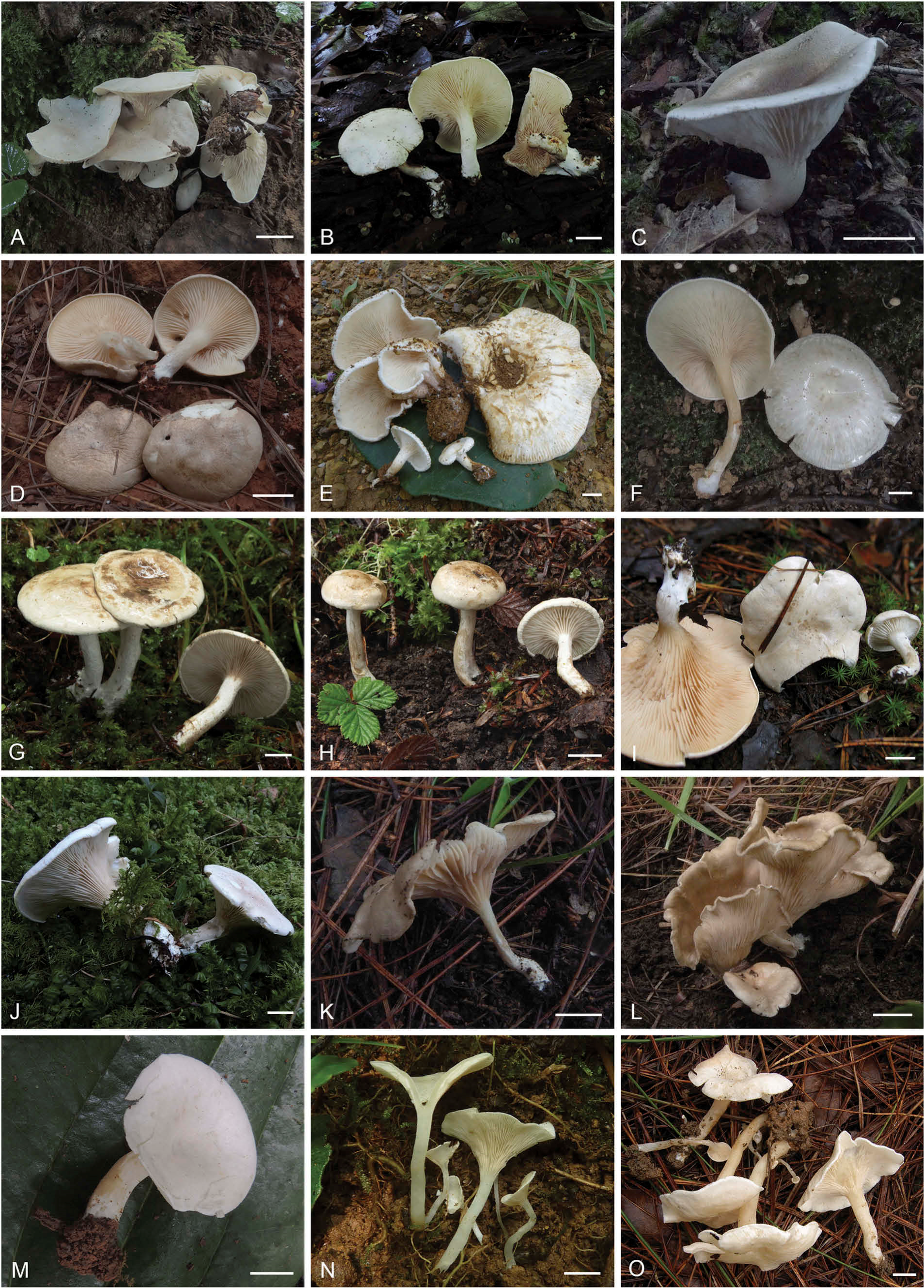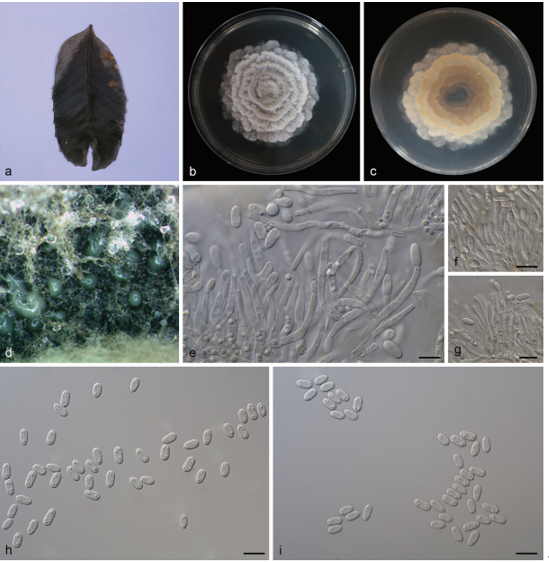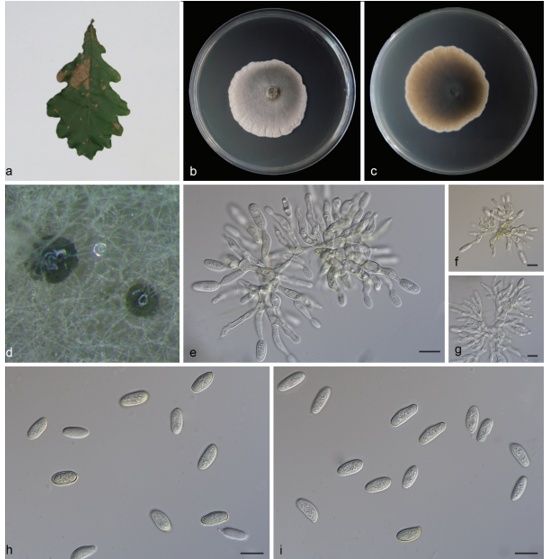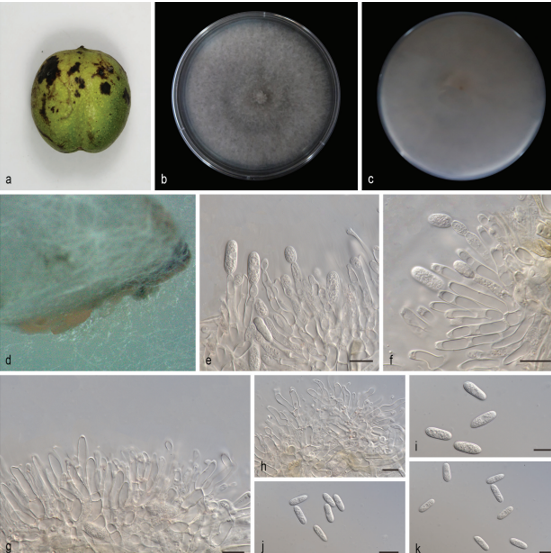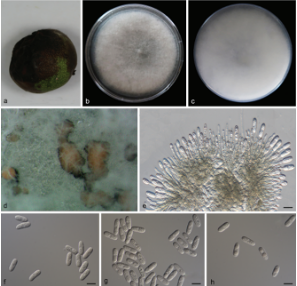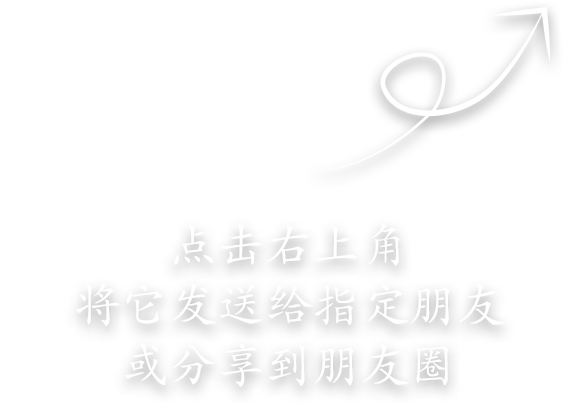Clitopilus sinoapalus S.P. Jian & Zhu L. Yang, sp. nov. 2020
MycoBank MB831311
Holotype: CHINA. YUNNAN PROVINCE: Lancang Lahu Autonomous County, Donghui Village, scattered or in groups, on soil under trees of Pinus kesiya var. langbianensis (A. Chev.) Gaussen, alt. 1260 m, 29 Aug 2017, Zhu L. Yang 6002 (holotype KUNHKAS101191).
Morphological description
Basidiomata infundibuliform and omphaloid, sometimes clitocyboid, usually small to medium-sized. Pileus 5–60 mm wide, concave, umbilicate or infundibuliform, often depressed at center; surface white (3A1) to whitish yellow (3A2–3), dry and usually minutely pruinose; margin slightly incurved, then straight, even or undulate; context 1–2 mm thick, whitish (2A1) to chalk white (3A1). Lamellae decurrent to deeply decurrent, yellowish white (1A2) to yellowish pink (2A3), somewhat crowded to crowded, up to 2 mm in height, edges entire and concolorous, fragile, lamellulae numerous. Stipe 15–40 × 2–5 mm, eccentric, subcylindrical, usually concolorous with pileus, smooth or minutely pruinose. Odor none or farinaceous.
Basidiospores 4–6 × 3.5–5(–5.5) μm, Lm × Wm = 4.89 (± 0.44) × 4.23 (± 0.46) μm, Q = (0.90–)1.00–1.50 (–1.57) (Qavg = 1.16 ± 0.13) [90/4/4], nearly hyaline, globose to subglobose and sometimes broadly ellipsoid to ellipsoid in profile and face view, nearly smooth or angled in polar view with 8–10 inconspicuous or obscure longitudinal ridges. Basidia 16–29 × 6–7 μm, clavate, hyaline, 4-spored, rarely 2-spored; sterigmata 2.5–3.5 μm. Lamellar trama more or less regular, composed of 4–12 μm wide, hyaline hyphae; oleiferous hyphae present; subhymenium composed of 2–4 layers of globose, subglobose to ellipsoid hyphal segments, 4–12 × 3–10 μm. Lamellae edges fertile. Pleurocystidia and cheilocystidia absent. Pileipellis a cutis composed of more or less radially arranged, slightly loose, repent, hyaline, smooth, cylindrical hyphae, 3–6 μm wide; subcutis made up of compactly arranged, thin-walled, hyaline, smooth, cylindrical hyphae, 5–12 μm wide, with some oleiferous hyphae; pileal trama composed of subregular, hyaline, oblong-ovoid, inflated hyphae, 7–20 μm wide, with many oleiferous hyphae.
Stipitipellis a cutis composed of compactly arranged, sometimes branched, thin-walled, hyaline hyphae, 3–5 μm wide, with some isolated or clustered ascending hyaline hyphae, 3–5 μm wide. Caulocystidia absent. Clamp connections absent.
Habitat: on soil under trees of Pinus kesiya var.
Distribution: east and southeast Asia.
GenBank Accession: ITS MN061322; 28S MN065711; rpb2 MN148151; tef1 MN166261; atp6 MN133770
Notes: In sect. Crispi, C. sinoapalus is also similar to C. albidus K.N.A. Raj & Manim and C. peri (Berk. & Broome) Petch. Clitopilus albidus, known from India, has a smaller pileus (7–34 mm wide) and smaller basidiospores with 7–8 distinct longitudinal ridges (Raj andManimohan 2018). The young basidiomata of C. sinoapalus could be confused with those of C. peri, originally described from Sri Lanka, but the latter usually has smaller basidiomata and ellipsoid basidiospores (Pegler 1977a, 1977b; Baroni and Watling 1999).
Reference: Si-Peng Jian, Tolgor Bau, Xue-Tai Zhu et al. (2020): Clitopilus,Clitocella, and Clitopilopsis in China.
